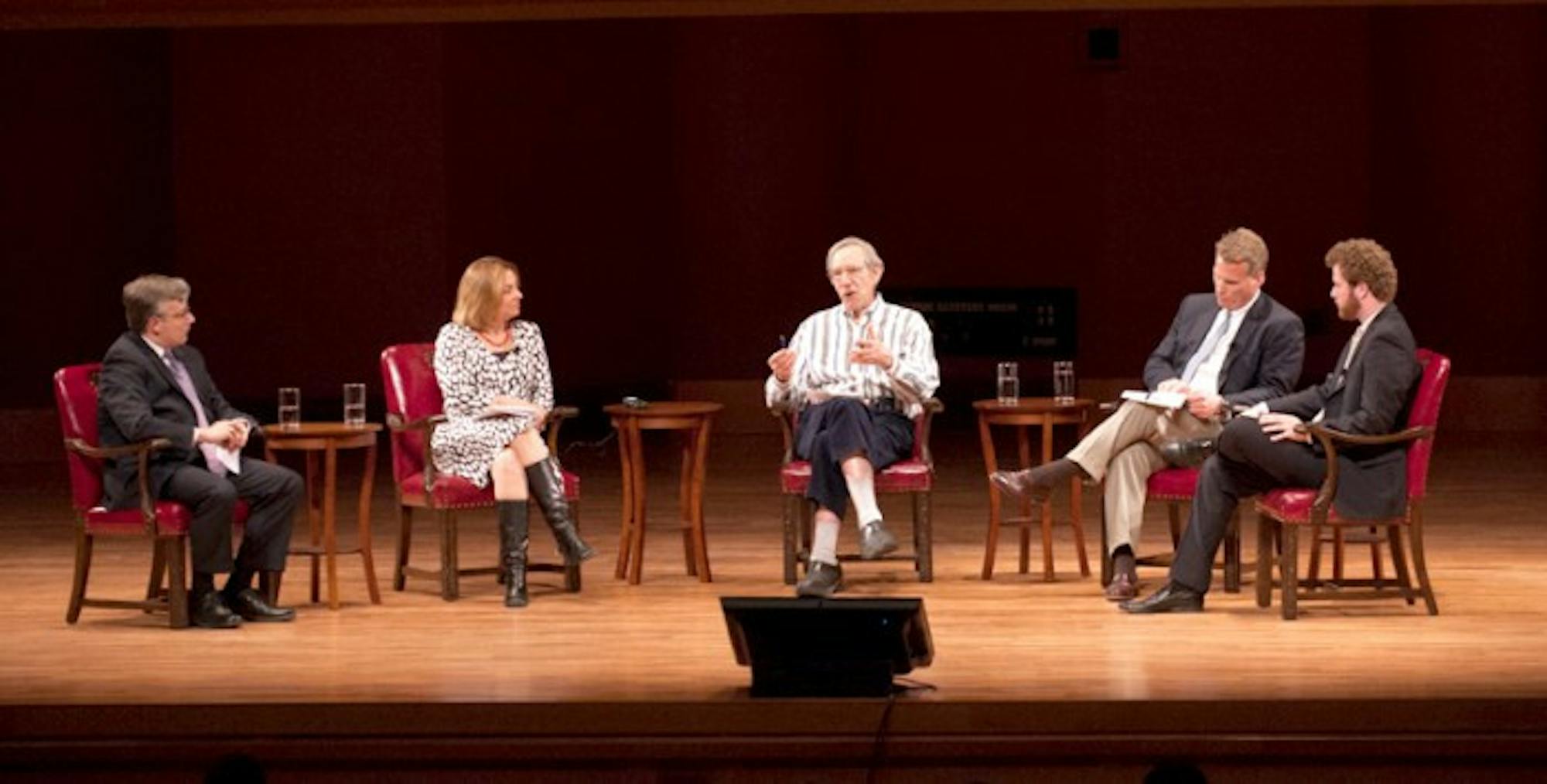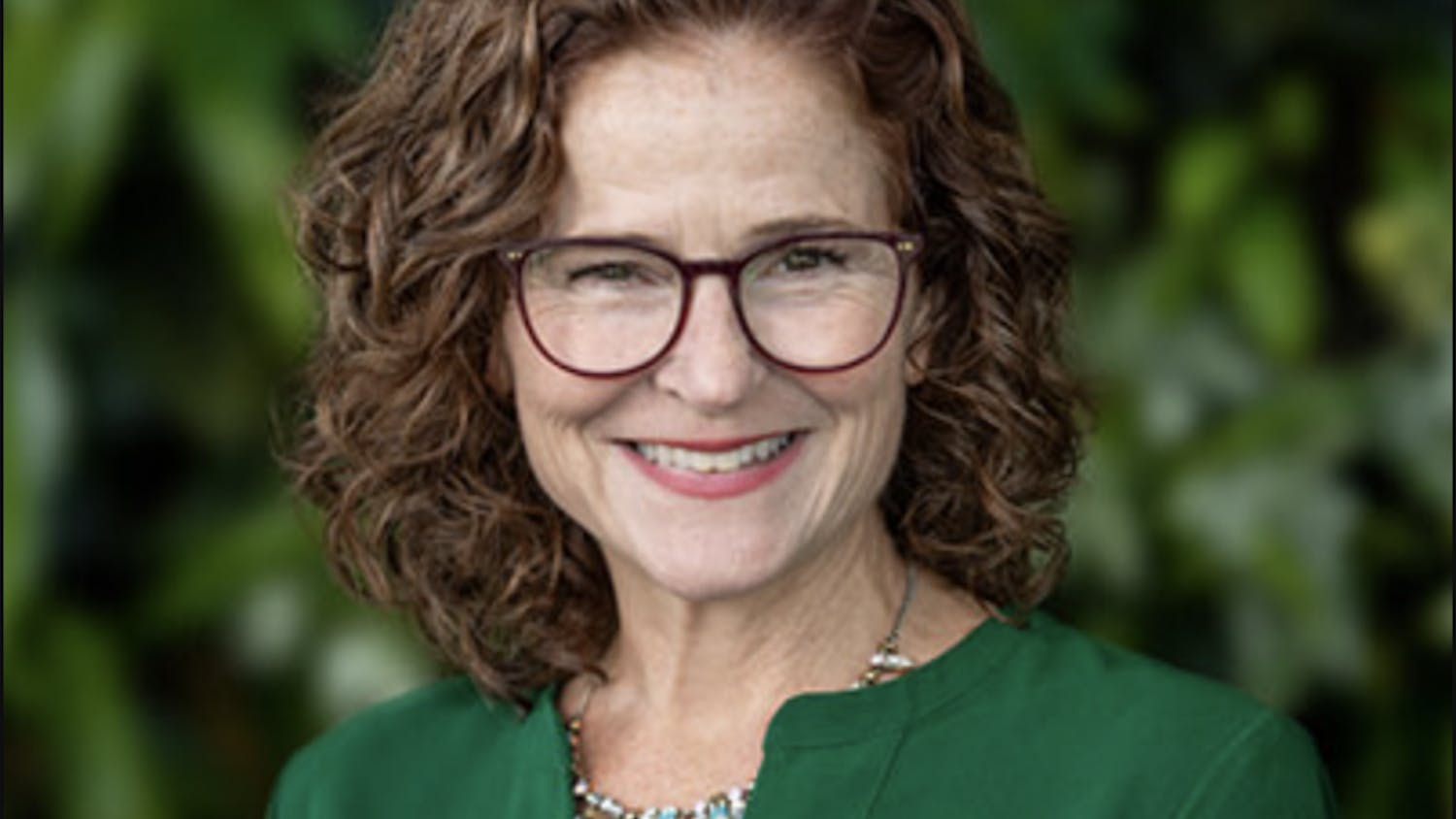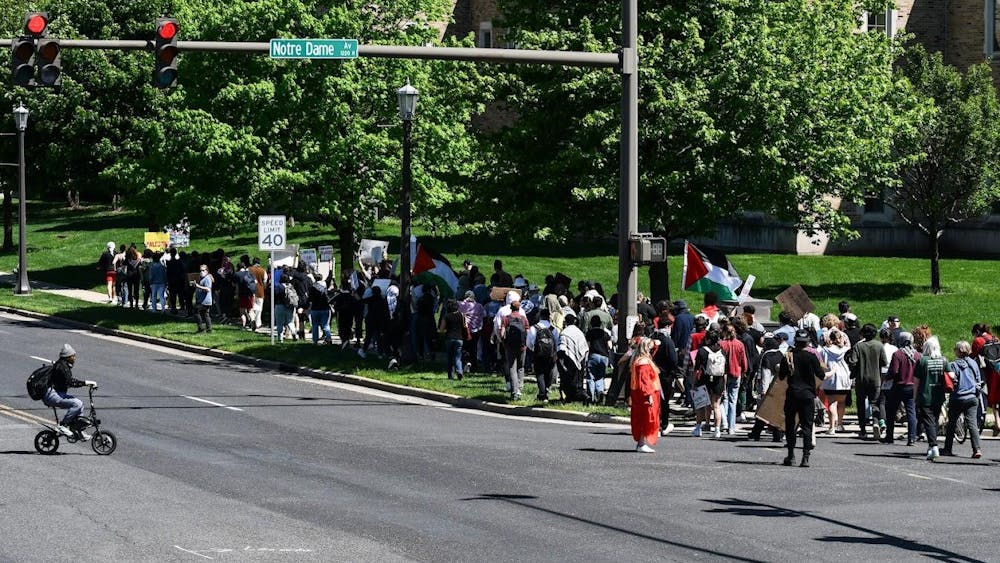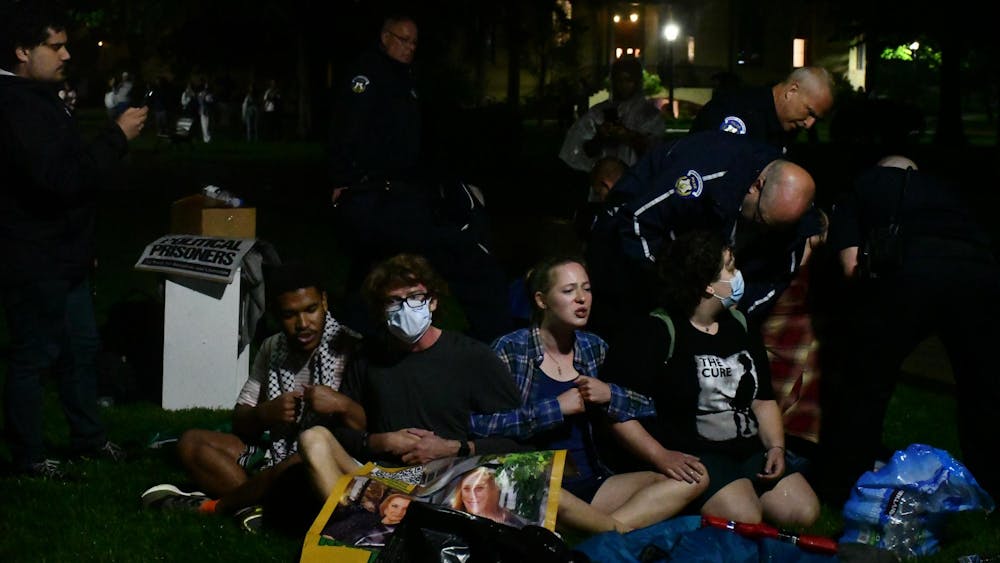The Dean’s Fellows of the College of Arts and Letters hosted four speakers in Leighton Concert Hall on April 16 to debate the most controversial aspects of athletics at the nation’s most prominent institutions.
The Notre Dame Athletic Department declined to participate in the discussion, co-executive director of the panel and senior Nikita Taniparti said.
Senior student body president emeritus and former varsity fencer Alex Coccia moderated the event by prompting discussion and posing audience-submitted questions.
The panelists considered sexual assault and preferential treatment for student athletes during a large part of the question-and-answer session. Other topics included the possible unionization of college athletes and Notre Dame’s Campus Crossroads Project.
Henneberger, a writer for The National Catholic Reporter and The Washington Post, said Notre Dame fans and administrators must take a stronger stance against assault in order to promote the University’s traditional values, which she said might “have been subjugated to the glory of the football team.”
Henneberger reported on and openly criticized the University’s response to the 2010 death of Elizabeth “Lizzy” Seeberg. Then a first-year student at Saint Mary’s, Seeberg committed suicide shortly after accusing a Notre Dame football player of sexually assaulting her. Former Irish linebacker Prince Shembo confirmed in February that he was the player involved in the subsequent investigation.
“Notre Dame isn’t Michigan; Notre Dame isn’t Florida State, and we never wanted our motto to be ‘no worse than Florida State,’ right?” Henneberger said. “This school means more to me than any other, obviously, and to see my school’s campaign to discredit in misleading terms, often, this dead 19-year-old just went beyond anything I would have believed the leaders of my school possible.”
“I see other schools like Missouri, for example, or like Dartmouth, where the leadership really is saying, ‘Wow, we’ve fallen short; we must do better on this,’” she said. “All these years later, I still have not really heard that from this school. You really can’t address a problem that you don’t know you have.”
Bearby said the NCAA itself cannot investigate claims of sexual assault and does not have the authority to impose punishments based on allegations alone.
“Amateurism and academics are our jurisdiction,” he said. “Criminal law isn’t our jurisdiction,” he said.
Coccia prompted the panelists to discuss the impact and implications of Notre Dame’s Campus Crossroads project, which will add academic, athletic and extracurricular space around Notre Dame Stadium and cost an estimated $400 million. Henneberger said she was concerned with the scale of the plan and its focus on the stadium.
“I look at that proposal for the expansion of the stadium and I see an idol; I see the absolute essence of what an idol is,” she said. “I look at this thing and I think it’s a visual representation of my question about ways in which we can be overemphasizing our cult of football.”
Pat Eilers, a member of the 1988 national championship football team and a ’89 and ’90 graduate in biology and mechanical engineering, said the stadium expansion indicates the University’s focus not on football but on improving access to athletic and academic facilities for all students.
“I do think, at least what I understand they’re trying to accomplish is addressing a lot of needs — both academic and athletic needs, not just Division I collegiate athletic needs,” he said. “… If you really think about the University and how it’s self-contained as a campus and we don’t have a lot of roads and streets going through it, if you look where all that could be put, the space around the stadium is really only utilized six, seven times a year depending on how many home games we have.
“I think there could be another perspective as well, which is we’re reutilizing this space on campus that is available for all these initiatives that help to benefit all of the above, both the academic and the athletic focus that the University stands for.”
Coccia asked the panelists to consider the National Labor Relations Board’s (NLRB) recent decision to consider scholarship football players at Northwestern University as employees with the potential to form a union. Henneberger said student-athletes’ demanding schedules prevent them from devoting enough time to academics.
“If they’re working a grueling full-time job, how many students doing that really could also take the most of their educational opportunities?” she said. “I think very few.”
Sperber, author of “Shake Down the Thunder: The Creation of Notre Dame Football,” said the NBA rule that requires draftees to spend just one year in college illustrates the increasing professionalization of college sports.
“These guys are in college for minor league NBA training,” he said. “They don’t pretend to be students. In a very public, symbolic way, it says college sports on certainly that level are in the entertainment business; this has got nothing to do with education.”
Eilers said he transferred to Notre Dame from Yale University because he believed in the capability of superior academic institutions to maintain strong programs for student-athletes. He said he thought Yale chose to sacrifice athletic opportunities in favor of more rigorous academics.
“I didn’t think you needed to sacrifice athletics, in particular this case football, for the pursuit of academic excellence,” he said. “…Notre Dame [also] strives for excellence in your spiritual development. I didn’t think there were many, if any, other institutions on the face of the earth that really strive for excellence in all three areas.”
Eilers said Notre Dame and other elite universities must continue to develop existing support structures for student-athletes and balance between athletics and academics across all University departments.
“I think [athletics programming] should enhance, not marginalize, the academic pursuits of the institution, and it should promote the goals and the values that are consistent with the overall institution’s goals and values,” Eilers said.
“If it doesn’t or if it starts marginalizing the other pursuits that we hold dear, then we have to reassess and try to put back in check,” he said.













